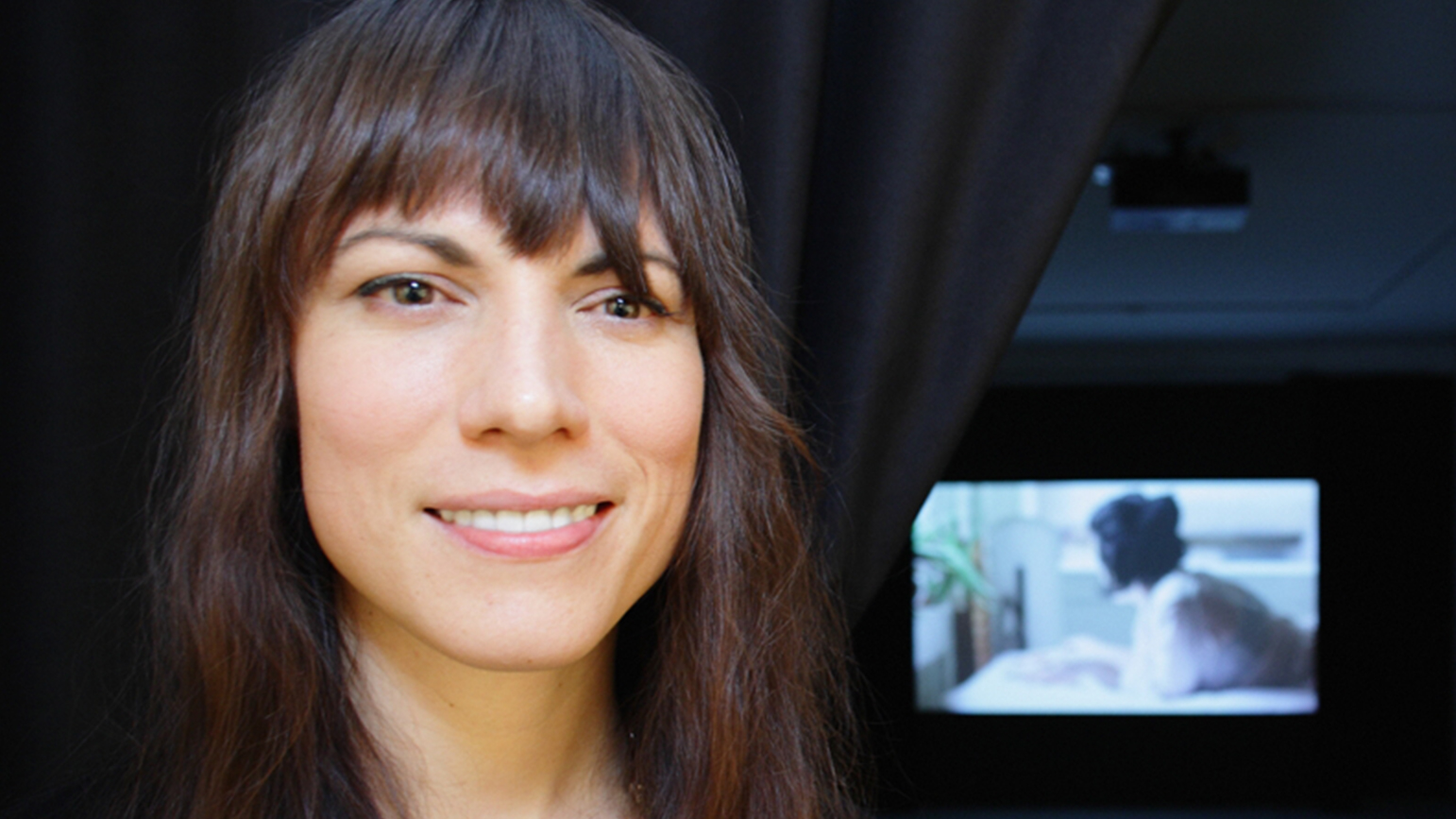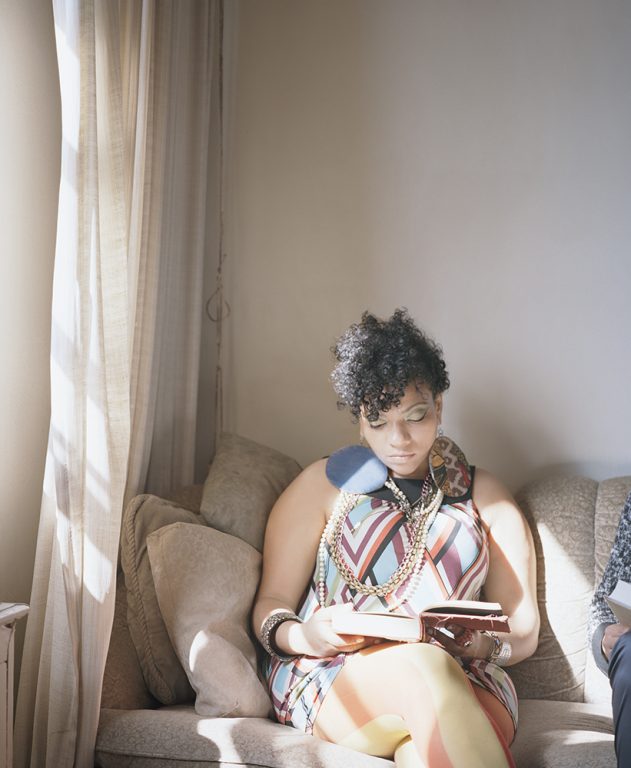
“5 Questions” is a series by the School of Art that asks alumni who are transforming art, culture, and technology about their current work and time at Carnegie Mellon.
Carrie Schneider’s work in photography and film reveals intense psychological experiences through solitude, intimacy, and interiority. Her recent series, Reading Women, captures a quiet moment as female friends and colleagues silently read books by women authors. Underlying this simple gesture are larger questions about the lack of women represented in the canons of art and literature. A selection from the series is the subject of a solo exhibition at the Miller Gallery, on view August 18 through September 9.
After graduating from Carnegie Mellon University with a BHA in psychology and art, Schneider earned her MFA at the School of the Art Institute of Chicago, attended the Kuvataideakatemia (Finnish Academy of Fine Arts) in Helsinki as a Fulbright Fellow, and completed the Whitney Independent Study Program.
Her work has been exhibited extensively at museums across the country including at the Museum of Contemporary Art, Chicago, The Andy Warhol Museum, and the Slought at the University of Pennsylvania. She has been written about in the New Yorker, Frieze, and the art:21 magazine, among many others.

What inspired the Reading Women series?
The Reading Women project was inspired, in part, by conversations with friends about the invisible and often mysterious mechanisms that cause works of art and literature to become canonized. Along with Sara Steele, Samina Akbari, and Bianca Beck – all graduates of Carnegie Mellon – the four of us started a reading group the year I began shooting this project in Brooklyn, where we were all living. This project grew out of our honest, and often contentious, discussions.
Could you speak about why you chose to use film, rather than digital, to shoot the Reading Women series?
Since I first started shooting and printing color film as an undergraduate at Carnegie Mellon, I’ve been enamored with the material. Film grain captures light in such a subtle way – the sharpness and precision of digital photography will never be able to replicate it.
I wanted to shoot this project on film using only natural light, with the book as a “bounce” – so I arranged that each shoot take place in the sitter’s home or studio at a time of day when there was abundant natural light (sunlight) streaming in through a window.

Could you describe the process for photographing the subjects of the series? To what extent are the photographs staged versus a spontaneous moment?
It was important to me that each sitter be depicted in their own self-defined space, doing something of their own volition (each sitter chose their own book). This context becomes a part of their portrait.
I asked each sitter to sit and read for me for two hours. So that, over time, and as much as possible, the sitter loses awareness of the camera, and their pose.
Could you talk a bit about your time as an undergraduate at CMU’s School of Art? Are there any experiences you had as a student that stand out?
When I was an undergraduate at CMU, the art faculty were extraordinarily generous – Susanne Slavick, Faith Wilding, Martin Prekop, Patricia Bellan-Gillen, Steve Kurtz, Jen Morris, and others – they created a safe and supportive space for each of us to make and experiment. My fellow classmates at Carnegie Mellon – Bianca Beck, Samina Akbari, Zak Prekop, Peter Mandradjieff, Peter Coffin, Matt Keegan, David Johnson, and others – continue to inspire me.
Do you have any advice to share with our students?
My best advice is borrowed from artist Paul Thek’s “Teaching Notes” (Thek taught a 4D studio course from 1978–1981 at Cooper Union):
“Your classmates are your world, your future will be like this now, as you related to your present, you will relate to your future, recognize your weakness and do something about it.”
1. Carrie Schneider, Abigail reading Angela Davis (An Autobiography, 1974), from the series Reading Women, 2012–2014. Chromogenic print, 36 x 30 inches. Image courtesy the artist and Monique Meloche Gallery, Chicago.
2. Carrie Schneider, Sarah reading Zora Neale Hurston (Every Tongue Got to Confess: Negro Folk-Tales from the Gulf States, collected late 1920s, pub. 2001), from the series Reading Women, 2012–2014. Chromogenic print, 36 x 30 inches. Image courtesy the artist and Monique Meloche Gallery, Chicago.




